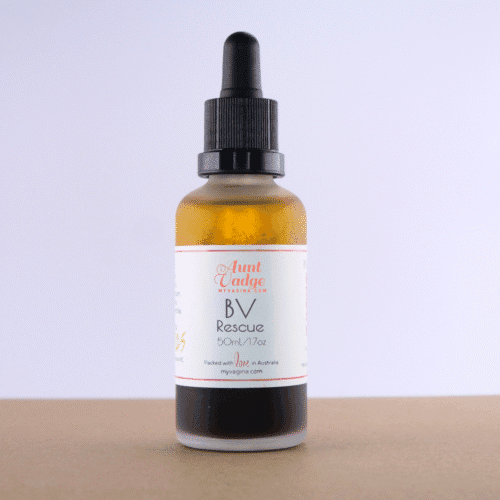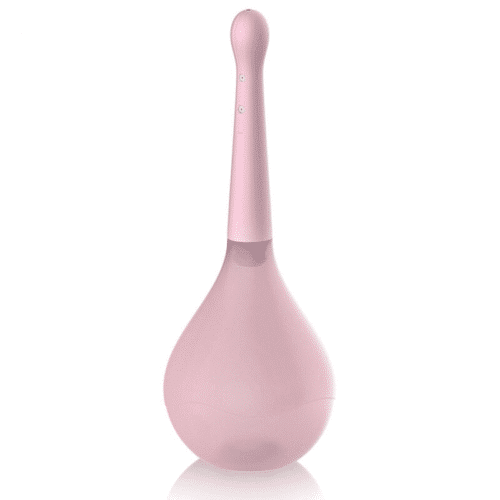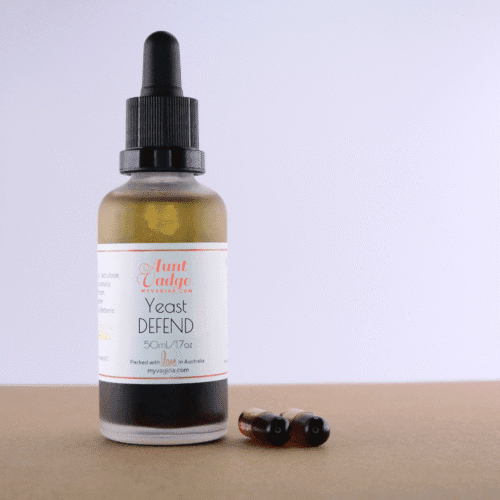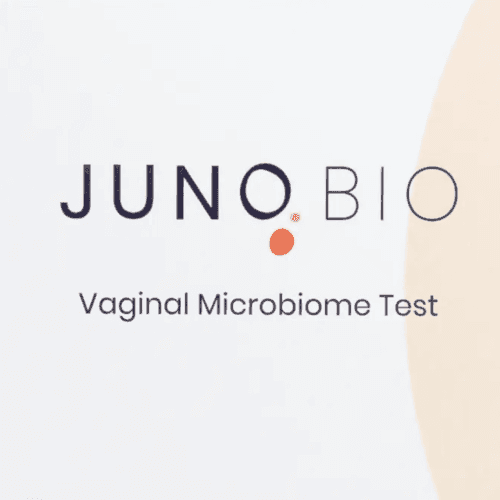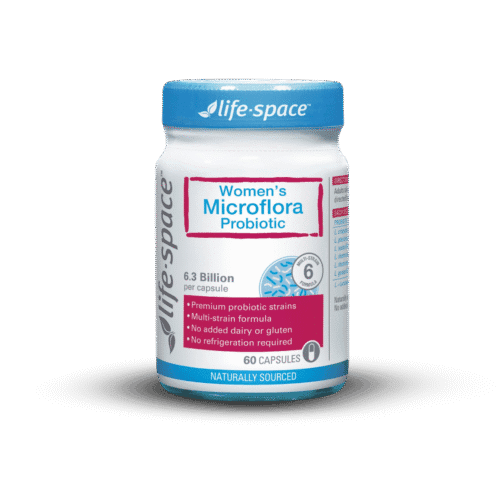There are a few ways to successfully use apple cider vinegar (ACV) to support recovery from bacterial vaginosis (BV) or vulvovaginal yeast infections (vulvovaginal candidiasis or VVC).
Don’t hurt yourself! Always dilute apple cider vinegar when using vaginally.
ACV alone can work very well for mild symptoms of BV or yeast infections1. Further, stronger ingredients for recurrent or more severe infections may be required. One single treatment probably won’t be enough, so a series of treatments across multiple days is usually best.
Apple cider vinegar has many benefits for vaginal infections. Research shows ACV has many antibacterial, antifungal and anti-inflammatory benefits.2
If your symptoms persist, please see a My Vagina clinical naturopath for support. We know yeast and can help you.
Ways people use apple cider vinegar for BV and yeast infections
- Diluted ACV vaginal douches
- ACV-soaked tampons
- Apple cider vinegar baths
- Drinking diluted apple cider vinegar
Apple cider vinegar vaginal douches and rinses
Dose: 1/4 cup of ACV mixed with 3/4 cup of warm water twice daily or as needed/recommended
While douching regularly is not recommended (it can wash away your healthy bacteria, mucous and disrupt the vaginal ecosystem), if you have BV or a yeast infection, you can consider an ACV douche to be a short-term therapy rather than a damaging douche. This is an important distinction that the ‘all douching is bad’ mantra hasn’t taken into account. Douche judiciously!
Don’t douche past infection and symptom resolution, not as a preventative, not ‘just in case’, not to ‘feel clean’. If it ain’t broke, don’t treat it. Use ACV douches as you need, and no more. If the issue doesn’t resolve, you need a different treatment, so get help or try another route. There are plenty of non-drug treatments to choose from.
What is a vaginal douche?
A douche is a vaginal rinse using a special silicone douching device, a turkey baster or syringe. Douching with ACV is popular since it has a mild antimicrobial and antifungal action, may be useful in supporting vaginal cell immunity, and is acidic (pH of 4.2 – healthy vaginal pH is 3.5-4.5).
For vaginal irrigations, hydrogen peroxide and liquid vaginal treatments.
This product has multiple variants. The options may be chosen on the product page
Support recovery from vaginal yeast infections and thrush, while supporting a healthy vaginal microbiome.
Protective vaginal bacteria – lactobacilli – prefer the environment to be more acidic, so an acidic flush with ACVs can help promote the goodies and send the baddies packing.
Apple cider vinegar tampons
Dose: soak a tampon in 1/4 cup of ACV and 3/4 cup water and insert, removing after a couple of hours, replace as necessary
The idea of an ACV tampon is the same as the douche, but in this case, the ACV stays close to the vaginal walls for a much longer period of time. This may be irritating to some of you. If irritation is intolerable, remove the tampon, and the irritation will subside. If the irritation persists, rinse the vagina with water.
Be sensible! If you have an ongoing infection and ACV isn’t really helping, find a better treatment. Don’t overdo it, don’t hurt yourself, and don’t continue to suffer! See an experienced My Vagina clinical naturopath for support.
Apple cider vinegar baths for BV and vaginal yeast
Dose: a cup of ACV in a bath
The purpose of an ACV bath when treating BV is to change the pH of the vulva, not the vagina.
Bathwater usually doesn’t go inside the vagina during a bath, though some of you will be able to suck bathwater into your vagina and squirt it back out like a douche. Beware very hot water if you do this!
The usual recommendation is one cup of ACV per bath, but keep in mind how big your bath is, how much water you put into it, and how bad your BV is. You may want to add another cup.
Vinegar on its own typically isn’t strong enough to cure BV, but it may work very well in some of you to manage symptoms.
You can also use ACV in a sitz bath, which is basically a shallow bowl or bath that only your bottom and vulva sit in. One cup should then be sufficient.
Using a high ACV to water ratio may burn, it’s quite acidic. Don’t overdo it, and always dilute vinegar in water.
Drinking apple cider vinegar for BV and vulvovaginal candidiasis (VVS)
Dose: a diluted shot glass per day – 1/4 ACV, 3/4 water
Using ACV as a tonic has a long history in healthcare for humans. We’ve been making vinegar forever, using it as a tonic and in food. Balsamic vinegar, red wine vinegar, rice wine vinegar; you probably use these in cooking and salads.
Vinegar is made using a process of fermentation with bacteria. The fermentation process produces enzymes and other goodies that have a beneficial impact on our tissues when we drink them.
Many people drink a shot of diluted ACV each day ‘for good health’, and while we do know ACV has a lot of enzymes and other active components, research for vaginal use is mixed.
So, do whatever you like!
Just don’t overdo it – ACV is quite acidic, so if you suffer from acid reflux, you may want to dilute it more, use it in food, or pick another healthful tonic.
There is absolutely no evidence either way that ACV taken orally as a daily tonic can cure BV, but there is also no evidence that it can’t!
References
- 1.Jang SJ, Lee K, Kwon B, You HJ, Ko G. Vaginal lactobacilli inhibit growth and hyphae formation of Candida albicans. Sci Rep. Published online May 31, 2019. doi:10.1038/s41598-019-44579-4
- 2.Lourenço A, Pedro NA, Salazar SB, Mira NP. Effect of Acetic Acid and Lactic Acid at Low pH in Growth and Azole Resistance of Candida albicans and Candida glabrata. Front Microbiol. Published online January 8, 2019. doi:10.3389/fmicb.2018.03265

Get a fresh perspective with a qualified, experienced vulvovaginal specialist naturopath.
This product has multiple variants. The options may be chosen on the product page
The most comprehensive vaginal microbiome test you can take at home, brought to you by world-leading vaginal microbiome scientists at Juno Bio.
Easy-to-use BV and AV treatment program.

Promote and support a protective vaginal microbiome with tailored probiotic species.



